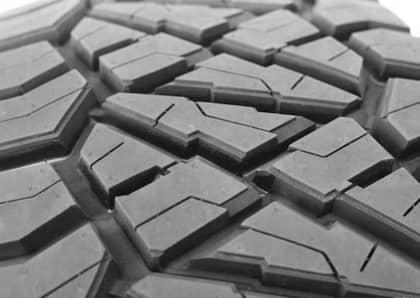4 Off-Road Tire Inspection Tips: Be Prepared For Summer Adventures
When the weather gets warmer, that should mean one thing for off-road enthusiasts: it's time to inspect your rig's tires to make sure that you're prepared for the coming season. Whether you pulling off a set of winters, or one of the lucky ones who gets to run their mudders all year long in a warmer climate, it's an excellent opportunity to take care of some of the regular maintenance your truck or SUV needs.

Your tires take a serious amount of abuse out on the trail, but they also face hazards on the pavement that can take their toll over the miles. What do you need to check for to make sure you can continue to rely on your off-road tires? We've put together these four tips to keep you safe, happy, and secure no matter what terrain you might encounter.
Sharp Edges, Sharp Eyes
Physical tire damage is always a risk when off-roading, and given that your rubber might be covered in dirt, mud, and other grim more often than not, it's not always easy to spot it. If you've been on the trail recently, you might have cut a tire on a rock or wash and not even noticed in the moment, which makes seasonal inspection that much more important.

A single sidewall cut might not seem like a big deal, but over time it can weaken the overall strength of a tire, and potentially lead to a blow-out. This can be accelerated if multiple cuts or gouges occur to the same tire—and since these can hide on both the inside and outside of a sidewall, you'll need to do more than take a casual look to verify that your rubber is in good shape.

At the same time, it's worth inspecting for bulges or other deformations that can occur when hitting an obstacle at a high rate of speed—such as a rock, a curb, or a pothole. In slightly less temperate areas, damage can especially occur right around a spring thaw when potholes and rough pavement begin to present itself on regular roads. These also reduce a tire's ability to stay together over the long term. It's not worth taking the risk that today's bulge could turn into tomorrow's tow.
How Deep Is Your Tread?
There's no question that certain off-road tires, in particular specialized designs such as mud tires, can wear out faster than a more traditional set of rubber. This is especially true if you do a significant amount of driving on regular pavement, which is less forgiving when it comes to wearing down treadblocks.

All-terrain tires are already somewhat of a compromise on the road due to the larger channels between treadblocks, which provides them with less of a contact patch than a street tire would have. As a result, you may not notice a reduction in wet weather handling as quickly as when riding on standard LTR rubber.

Where you will definitely discover a drop-off in performance, however, is on the trail. Typically, tires are considered worn out if the tread depth drops to 2/32 of an inch, but off-road or all-terrain tires usually require much more tread depth than 2/32" to remain effective on sand, in mud, or on rock. The specific tire you are using will impact how long you can go before performance starts to taper off, so make sure you use a tire depth gauge to check the depth and then compare it to the recommendations for that model.
Wear And Rotation
Uneven tire wear is almost always a sign of a suspension or alignment issue. On an off-road vehicle, it can be tough to balance the need to extend the life of your tires with the challenges faced by difficult operating conditions.
Given that trail use can pound a suspension into submission, keep an eye out for indicators that shock absorbers, ball joints, or wheel bearings are starting to fail. On your tires, this often looks like 'cupping,' or tires that show uneven patches of wear associated with the tire impacting the pavement in an irregular fashion as the chassis struggles to keep it in touch with the ground.

You'll also want to look for the standard signs of under-inflation (wear along both sides of the treadface) and over-inflation (wear along the middle of the treadface), which can result when you forget to refill or air-down your tires after a day on the sand, rocks or mud.
Rotating off-road tires isn't all that difficult. You can use the pattern recommended in your owner's manual, but you'll also want to work in that full-size spare to maximize the amount of lifespan you get from all of your tires.
Don't Forget Trailers
If you tow a vehicle hauler, utility trailer, or camper during the summer months, don't forget to do a reality check on the condition of its tires as well.

All of the above generally applies when inspecting trailer tires, but you'll want to add one more step and look for signs of dry rot. This usually occurs when rubber is exposed to UV rays or ozone, and it often affects trailer or RV tires that have been sitting in the sun over the course of the winter. It manifests as small cracks in the sidewall rubber, which indicate that the strength of the tire has been compromised, and should be replaced.
Looking to get the most out of your off-road tires? Check out our guide for maximizing their lifespan.











